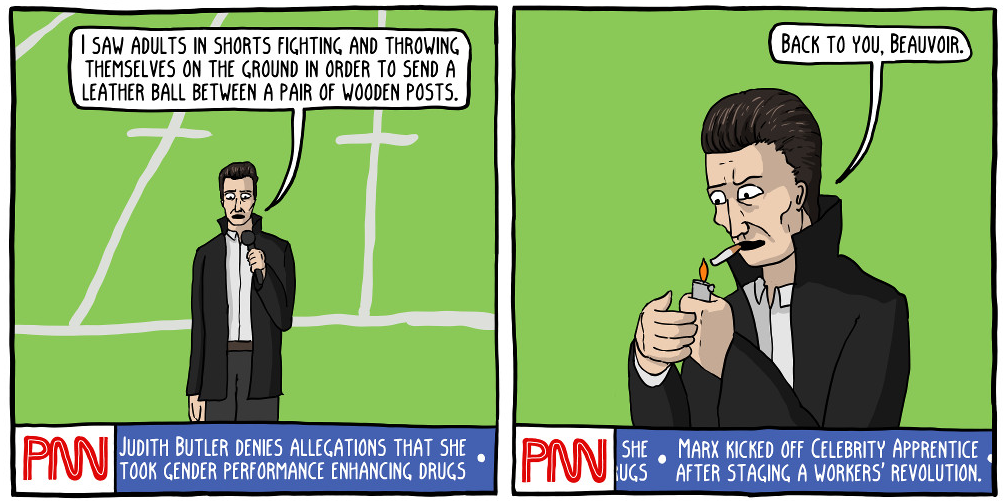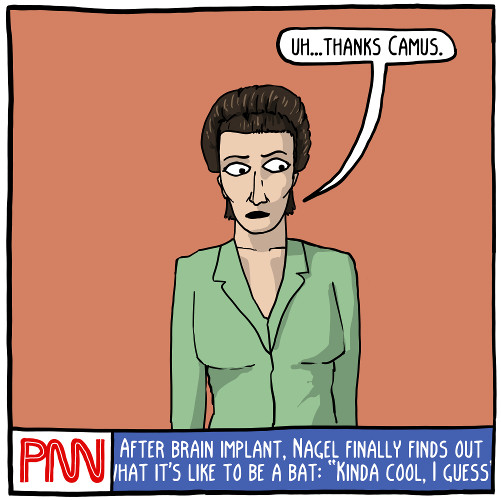This is part of the DR Book Collection.
 While Bill Watterson’s Calvin & Hobbes touched on childhood and life experience more generally, cartoonist Scott Hales delves into the details and nuances of Mormonism’s unique and somewhat odd culture while capturing the same kind of magic described above. His new graphic novel–The Garden of Enid: Adventures of a Weird Girl, Part One–follows the thoughts and experiences of Enid: a witty, contemplative, socially-awkward (“weird”) 15-year-old Mormon girl. The hilarity of the strips stems from the portrayals of embarrassingly familiar situations faced by young Mormons: stake dances, boring teachers, YW camp, EFY, etc. Reading them feels like being in on an inside joke. Their depth, however, emerges from the moments of loneliness, uncertainty, reflection, and flickers of human connection. For me, the heart of the graphic novel is summed up in Enid’s exchange with her McConkie-loving seminary teacher who dismisses her “weird questions” in favor of a supposedly “simple”, “black and white” gospel. By contrast, the God Enid believes in is a “colorful” one “who likes weird questions.” Similarly, life is not “black and white.” It’s not even gray. It’s vibrant.
While Bill Watterson’s Calvin & Hobbes touched on childhood and life experience more generally, cartoonist Scott Hales delves into the details and nuances of Mormonism’s unique and somewhat odd culture while capturing the same kind of magic described above. His new graphic novel–The Garden of Enid: Adventures of a Weird Girl, Part One–follows the thoughts and experiences of Enid: a witty, contemplative, socially-awkward (“weird”) 15-year-old Mormon girl. The hilarity of the strips stems from the portrayals of embarrassingly familiar situations faced by young Mormons: stake dances, boring teachers, YW camp, EFY, etc. Reading them feels like being in on an inside joke. Their depth, however, emerges from the moments of loneliness, uncertainty, reflection, and flickers of human connection. For me, the heart of the graphic novel is summed up in Enid’s exchange with her McConkie-loving seminary teacher who dismisses her “weird questions” in favor of a supposedly “simple”, “black and white” gospel. By contrast, the God Enid believes in is a “colorful” one “who likes weird questions.” Similarly, life is not “black and white.” It’s not even gray. It’s vibrant.
The Garden of Enid is what it is to be an American Mormon in microcosm. Even though the main character is a Mia Maid, Enid’s experiences can resonate with Mormons of all ages and genders. For me, Enid is that ward member that you have an unexpected, but incredibly moving moment with; that member who totally “gets it” when you’re unable to put on a smile at church. But she also–like Calvin–can model what not to do and how to cut oneself off from others. Like the best comic strips, Enid allows you to both laugh and reflect. And it’s a nice reminder that not only is God colorful, but so is life.
You can see my full review (from which the above is taken) at Worlds Without End. You can listen to cartoonist Scott Hales interviewed on Greg Kofford Books’ AuthorCast here.





